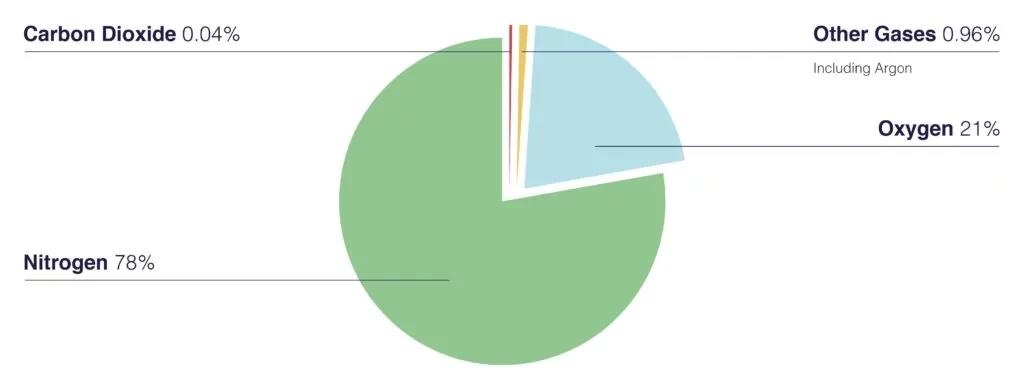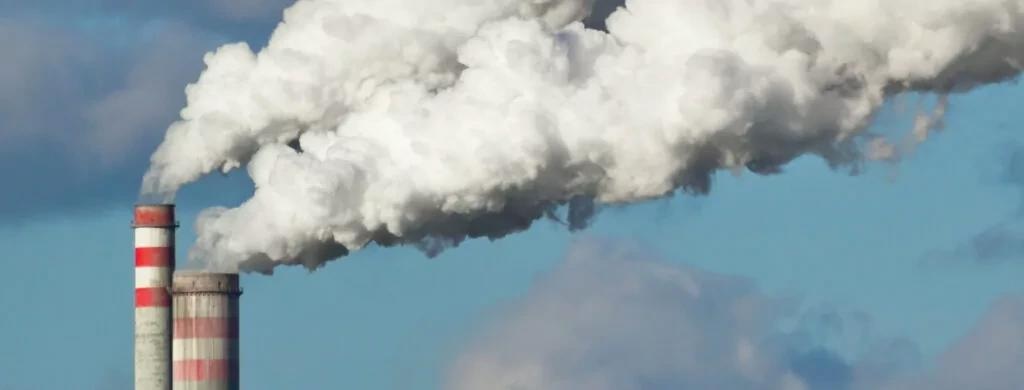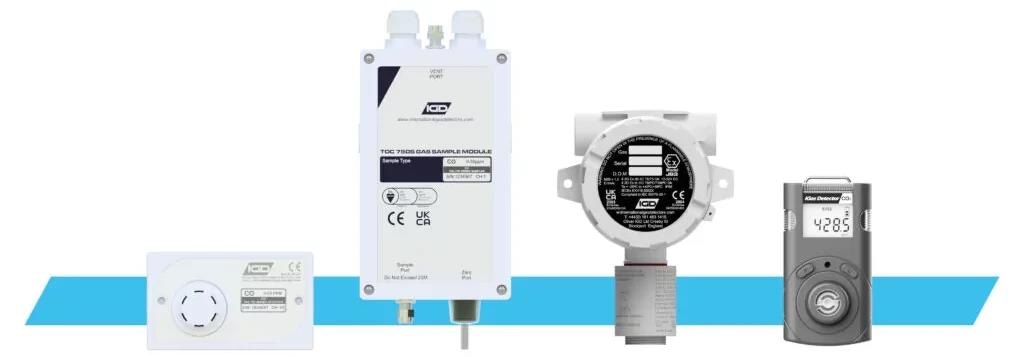Consumers often believe that an O2 gas detector is sufficient when it comes to monitoring for CO2 as it is an asphyxiant. However, this is not the case.
This article will discuss why CO2 detectors are a must, introduce the toxic hazards associated with the gas, and outline some of the possible solutions offered by International Gas Detectors.
Carbon dioxide is frequently incorrectly referred to as a simple asphyxiant, but it is classified as a toxic gas under UK and US legislation.
CO2 and Normal Air
The normal level of oxygen in the atmosphere is 20.9% by volume, with nitrogen comprising most of the balance at 78% and argon and a mix of other trace gases making up 1%.

Image Credit: International Gas Detectors Ltd
An O2 gas detector’s first alarm for a depletion in oxygen levels is typically set to 19.5%. The level of oxygen depletes due to either of the following:
- Another gas leaking into the area resulting in dilution/displacement of the oxygen level
- Oxygen is being consumed by something such as a fire or biological process
The first depletion alarm at 19.5% signifies a reduction in oxygen level of 1.4% by volume, or 14,000 ppm (parts per million).
Most toxic gases have low ppm thresholds for exposure, such as the following:
- NH3 first alarm is at 25 ppm (0.0025% Vol)
- H2S first alarm is at 5 ppm (0.0005% Vol)
- CL2 first alarm is at 0.5 ppm (0.00005% Vol)
This results in an O2 gas detector not being able to effectively monitor the release of these gases because it does not have the capacity to set a 5 ppm alarm monitoring to one or two decimal places.
This is also the case for gases such as CO2, which is commonly present in the atmosphere, typically at approximately 450 ppm. CO2 has occupational exposure alarms at the following:
- First alarm at 0.5% (5000 ppm) (the long-term exposure limit is eight hours)
- Second alarm at 1.5% (15,000 ppm) (the short-term exposure limit is 15 minutes)
Setting a 0.5% depletion alarm on an O2 gas detector to monitor for CO2 may appear possible, but this would be hazardous and potentially fatal.
As mentioned, 78% of the atmosphere is nitrogen. Thus, in the event of a CO2 leak, since most of the atmosphere is nitrogen, most of the gas displaced in the application will be nitrogen. A much smaller percentage of the oxygen is displaced. The increase in CO2 is therefore not matched by a correlating decrease in oxygen levels.
For example, if CO2 was present in the atmosphere at 4% by volume, the corresponding oxygen level would be 20%. This results in both the long-term and short-term exposure limits for CO2 being exceeded by a factor of eight and still not triggering the alarm.
Toxic Effects of Carbon Dioxide
Carbon dioxide is often not considered to be a toxic or asphyxiating gas because it is a natural part of our breathing process. However, CO2 can rapidly become hazardous in certain conditions.
We breathe background levels of CO2 between 400 ppm and 1200 ppm depending on location, such as outdoors or in a busy office. This is processed by the lungs and subsequently released as approximately 4-5% carbon dioxide as part of the lung’s metabolic function.
The purpose of this metabolic function is to balance the PH or acidity levels in the bloodstream to ensure that blood maintains a neutral level. However, this process can only take place if a small amount of CO2 is present in the air.
Areas with increased levels of CO2 do not maintain this balance, making it difficult for excess CO2 to be dispersed from the body. As a result, PH levels become imbalanced and blood more acidic (acidosis), leading to long-term damage to organs if left unchecked. This is why carbon dioxide is classed as a toxic gas.
The Legal Requirements of CO2 Detection
The UK Health and Safety Executive produced a document titled Assessment of the Major Hazard Potential of Carbon Dioxide, which discusses the toxic effect of CO2 on the human body in detail.
Additionally, both the UK HSE and the American OSHA regulations have legislated exposure limits for the inhalation of CO2, with a limit of 1.5% over a period of 15 minutes (short-term exposure) and a limit of 0.5% over a period of eight hours (long-term exposure limit).
This means that it is dangerous to class carbon dioxide as a simple asphyxiant. The installation of specific CO2 detectors is required by law, and oxygen depletion monitors must never be used for this.

Image Credit: International Gas Detectors Ltd
IGD’s Carbon Dioxide Gas Detectors
IGD has been manufacturing gas detection equipment for over 100 years since its establishment in 1917. In addition, it has been manufacturing CO2 detectors even before the Second World War.
This means that IGD has been at the forefront of gas detection technology and actively involved in protecting people from hazardous gases for over 100 years.
IGD offers a range of CO2 detectors, including networked monitors from the 750 addressable series, which deliver improved capability while reducing overall costs.
The 750 addressable series also offers constant 24/7 monitoring of the area, being able to activate ventilation and automatic shut-off of a process following the detection of a leak.
Click here to learn more about the TOC-750 series gas detectors.

Image Credit: International Gas Detectors Ltd
The portable iGAS CO2 detector is the ideal solution for those that transport carbon dioxide gas bottles, such as those working in the beverage industry or with dry ice. This detector also offers a leading 14-day run time on just one charge, being USB re-chargeable and IP68-rated for durability.

This information has been sourced, reviewed and adapted from materials provided by International Gas Detectors Ltd.
For more information on this source, please visit International Gas Detectors Ltd.